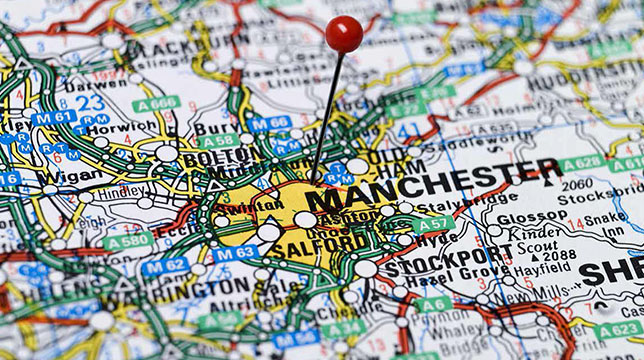
Manchester’s growing housing crisis is expected to worsen sharply over the next five years. New analysis reveals that the city’s population is growing almost 15 times faster than new homes are being built.
Property adviser JLL predicts that house prices in Manchester are expected to increase by 28.2% due to growing demand from a surging population and insufficient supply.
In 2016 alone, Manchester residential property capital values grew by 16%. Overall prices in the North West are predicted to rise 18.1% until 2021.
Low levels of new-build
The North West’s and Manchester’s imbalance between supply and demand is the main reason property value growth rates are currently outpacing the rest of the UK.
According to the latest official figures, just 290 homes were built in Manchester in 2015-16. This brings the total number of dwellings (houses and flats) to around 218,500. At the same time, the city’s population increase by 10,000 according to population projections based on 2014/15 figures.
The imbalance between population growth and new-build is now one of the worst across the whole of the UK. Only Westminster and Kingston upon Thames in London saw a bigger gap between the rate of population growth and new houses being built.
Greater Manchester
The housing crisis is not confined to the city center alone. In Oldham the population is growing at five times the housebuilding rate. Meanwhile, the populations of Stockport and Salford are both growing three times faster than new homes are being built in the area.
Across the conurbation only two boroughs, Bury and Wigan, saw the number of new homes grow faster than the population increase.
Manchester’s housing shortfall is now publicized widely on property investment forums. In January, the letting agent Martin & Co identifed Manchester, Cardiff and London as the most lucrative places to invest in buy-to-let properties. Rental demand was cited as one of the strongest indicators for profitable buy-to-let locations.
Once again renters will be the biggest losers. According to John Goodall, CEO of Landbay: “Tenants will have little choice but to compete for what properties are on offer. As a result we expect rents to rise faster than the pace of inflation next year, with growth tripling to 3% by the end of 2017.”
The Renters Alliance helps renters with bad landlords and letting agents. If you have a story you would like to share, please contact the National Renters Alliance through our website or email us at contact@nralliance.co.uk